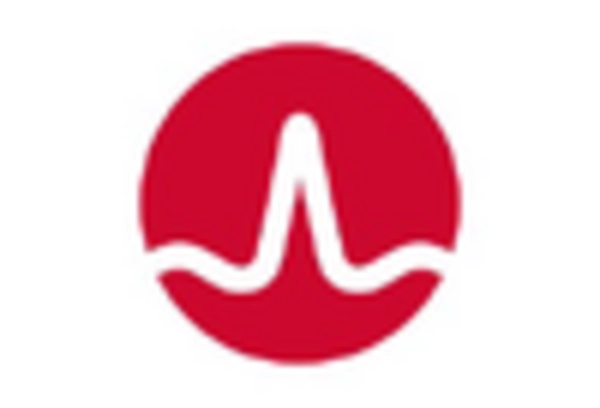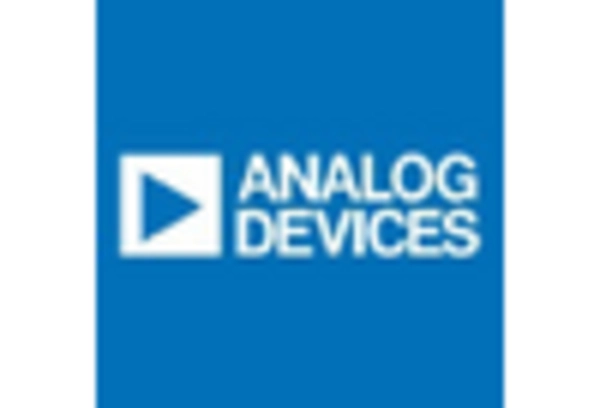Increased Data Traffic
The surge in data traffic across various sectors is a primary driver for the serdes market. With the proliferation of cloud computing, IoT devices, and high-definition video streaming, the demand for high-speed data transmission is escalating. In the US, data traffic is projected to grow at a CAGR of approximately 25% over the next five years. This growth necessitates advanced serdes solutions to manage and optimize data flow efficiently. As organizations seek to enhance their network capabilities, the adoption of serdes technology becomes crucial. The serdes market is thus positioned to benefit from this increasing demand, as companies invest in infrastructure upgrades to support higher data rates and improved connectivity. Consequently, the need for innovative serdes solutions is likely to expand, driving market growth.
Emergence of 5G Technology
The rollout of 5G technology is significantly influencing the serdes market. As 5G networks become more prevalent, the demand for high-speed, low-latency communication solutions is intensifying. The US is at the forefront of 5G deployment, with major telecommunications companies investing heavily in infrastructure. This transition is expected to create a market opportunity worth billions of dollars for the serdes market. The need for efficient data transmission in 5G applications, such as autonomous vehicles and smart cities, underscores the importance of serdes technology. As a result, manufacturers are likely to focus on developing advanced serdes solutions that can meet the stringent requirements of 5G networks, thereby propelling market growth in the coming years.
Rising Focus on Energy Efficiency
The growing emphasis on energy efficiency in technology is influencing the serdes market. As organizations seek to reduce their carbon footprint and operational costs, there is a heightened demand for energy-efficient solutions. In the US, energy consumption in data centers is projected to reach 73 billion kWh by 2025, prompting a shift towards more sustainable technologies. The serdes market is responding to this trend by developing solutions that not only enhance performance but also minimize energy consumption. This focus on energy efficiency is likely to drive innovation within the serdes market, as manufacturers strive to create products that align with sustainability goals. Consequently, the demand for energy-efficient serdes solutions is expected to rise, contributing to overall market growth.
Shift Towards Data Center Modernization
The ongoing modernization of data centers is a critical driver for the serdes market. As organizations strive to improve efficiency and reduce operational costs, they are increasingly investing in advanced technologies, including serdes solutions. In the US, the data center market is expected to grow to $100 billion by 2026, reflecting a strong trend towards modernization. This shift necessitates the adoption of high-speed interconnects, which are essential for optimizing data flow and enhancing overall performance. The serdes market stands to benefit from this trend, as companies seek to upgrade their infrastructure to support the growing demands of cloud computing and big data analytics. As a result, the demand for innovative serdes solutions is likely to increase, driving market growth in the coming years.
Growing Adoption of AI and Machine Learning
The increasing integration of artificial intelligence (AI) and machine learning (ML) technologies across various industries is driving demand for the serdes market. These technologies require substantial data processing capabilities, which in turn necessitate high-speed data transmission solutions. In the US, the AI market is projected to reach $190 billion by 2025, indicating a robust growth trajectory. This growth is likely to spur investments in serdes technology, as organizations seek to enhance their data handling capabilities. The serdes market is expected to evolve in response to these trends, with a focus on developing solutions that can support the data-intensive nature of AI and ML applications. Consequently, the demand for innovative serdes products is anticipated to rise, further fueling market expansion.















Leave a Comment